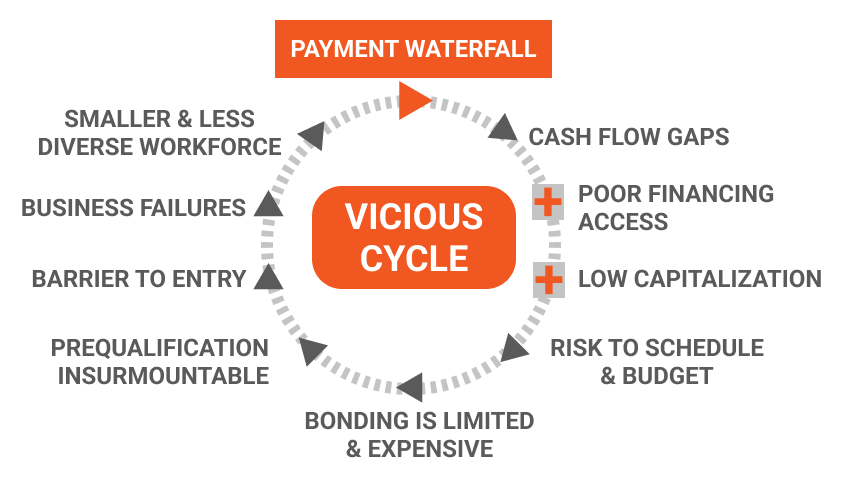
Financial Prequalification Eliminated


Risk was Managed Top-Down by Using Money as Leverage
Payments Stopped at Every “Management” Level
Creating Payments Delays
…But Small Businesses have Limited Access to Financing, especially those from Underrepresented Groups

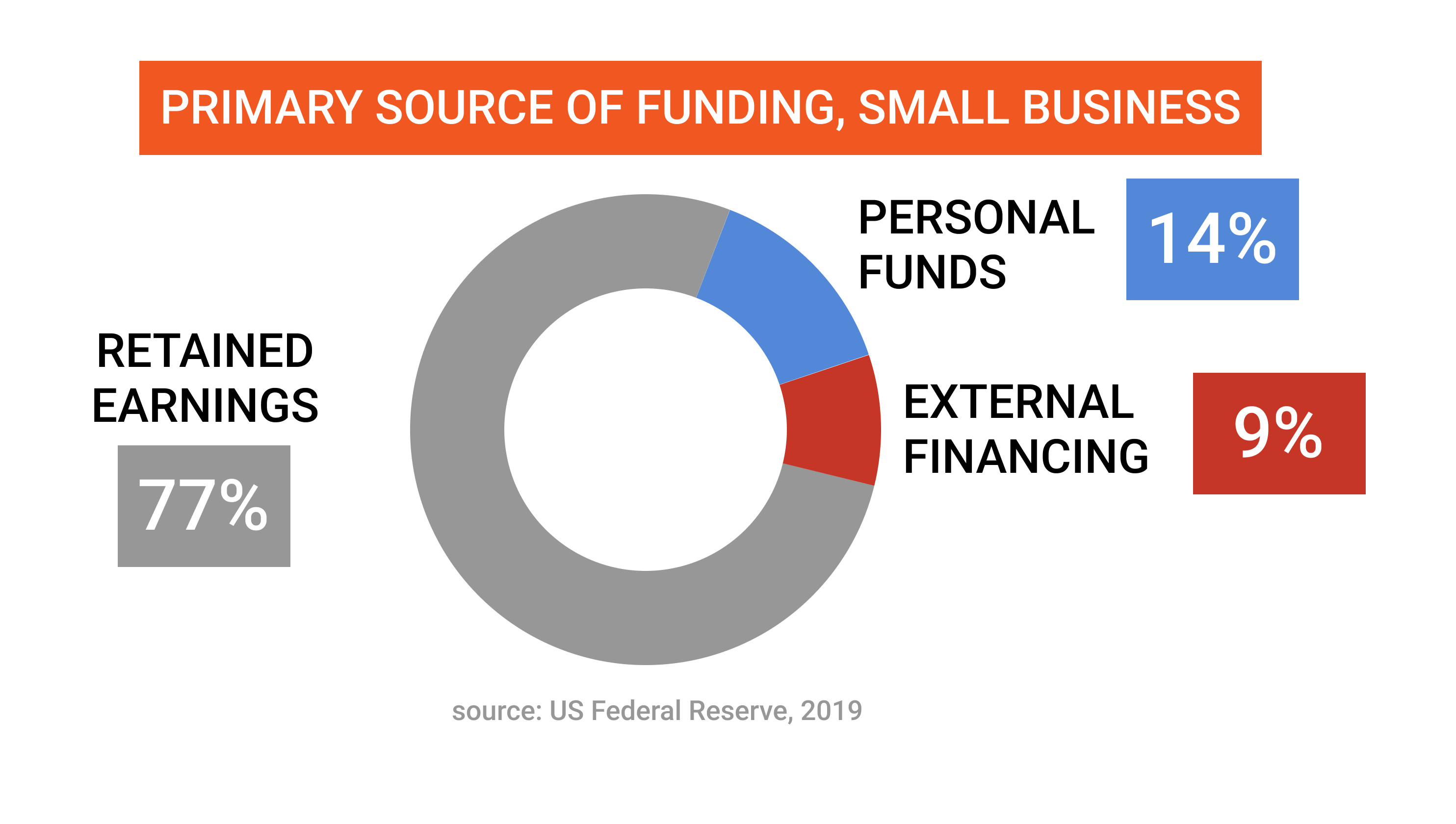
…Resulting in a Dependency Upon Personal Savings and Retained Earnings
…and Profit Margins are Low which Means Small Construction Businesses Cannot Maintain Adequate Cash Reserves
14 days
Cash Buffer
for 89% of Hispanic and 94% of Black Businesses
source: JPMorgan Chase Institute
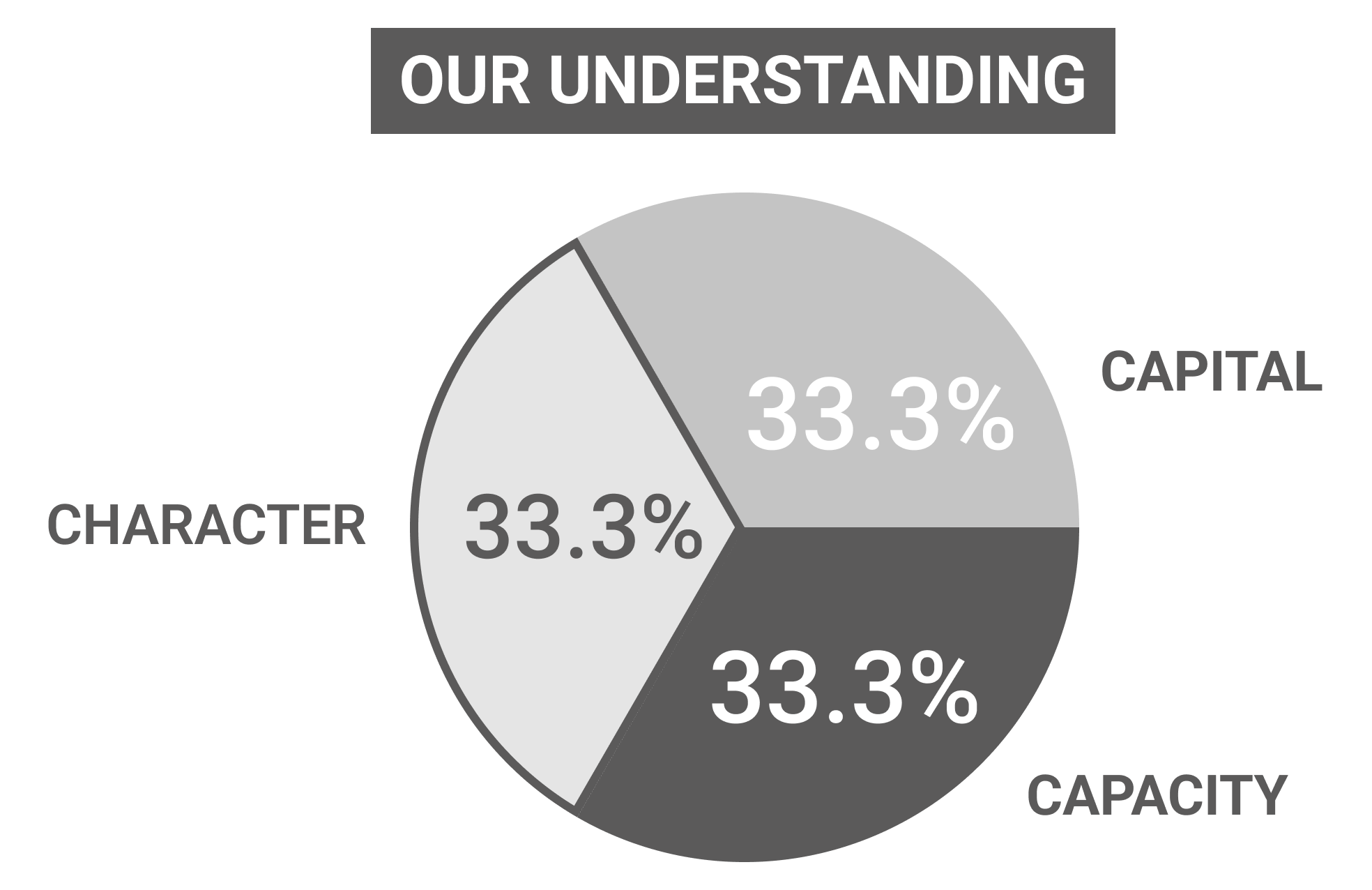
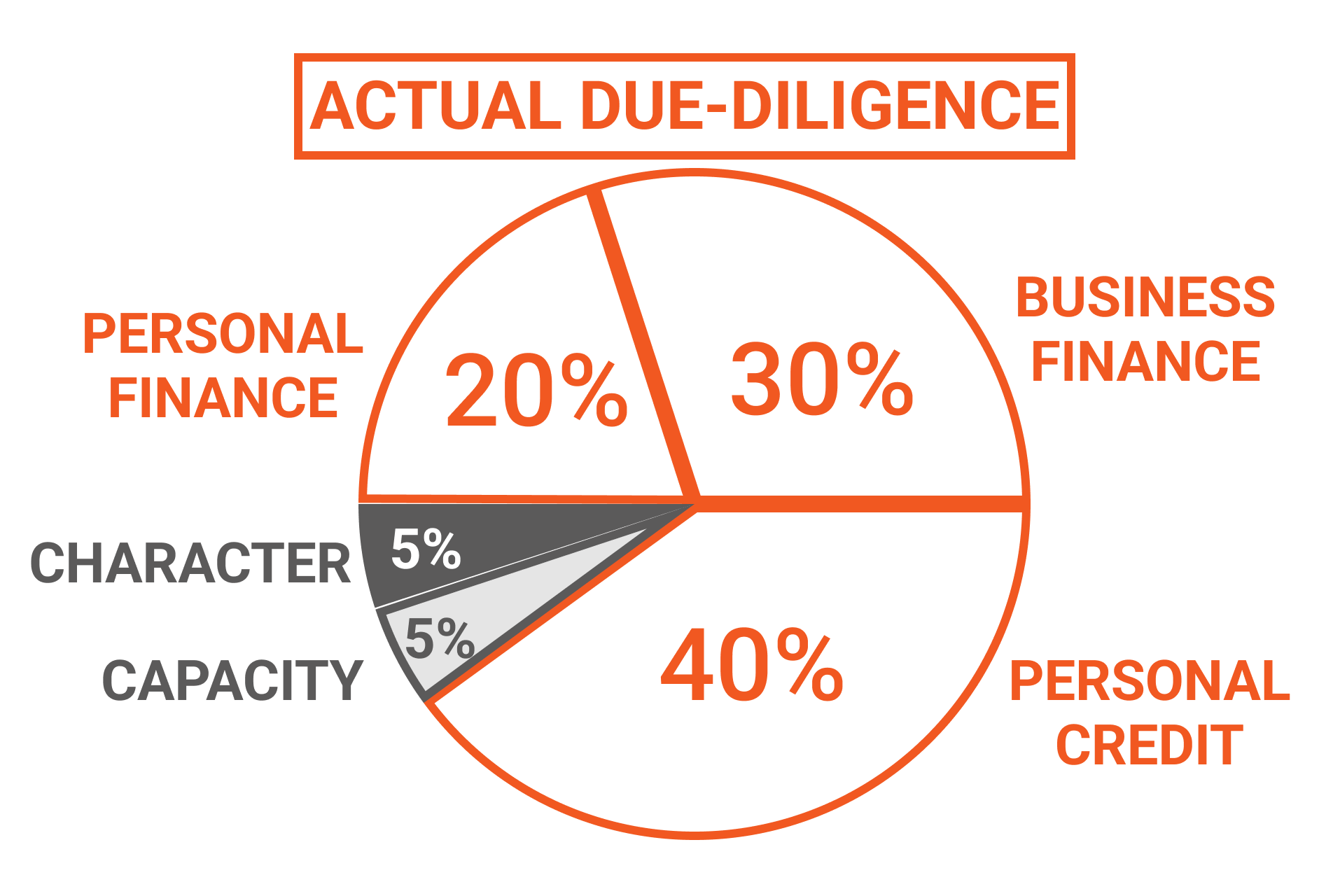
…Making Performance Bonding Challenged since it’s largely based upon Financial Due-Diligence
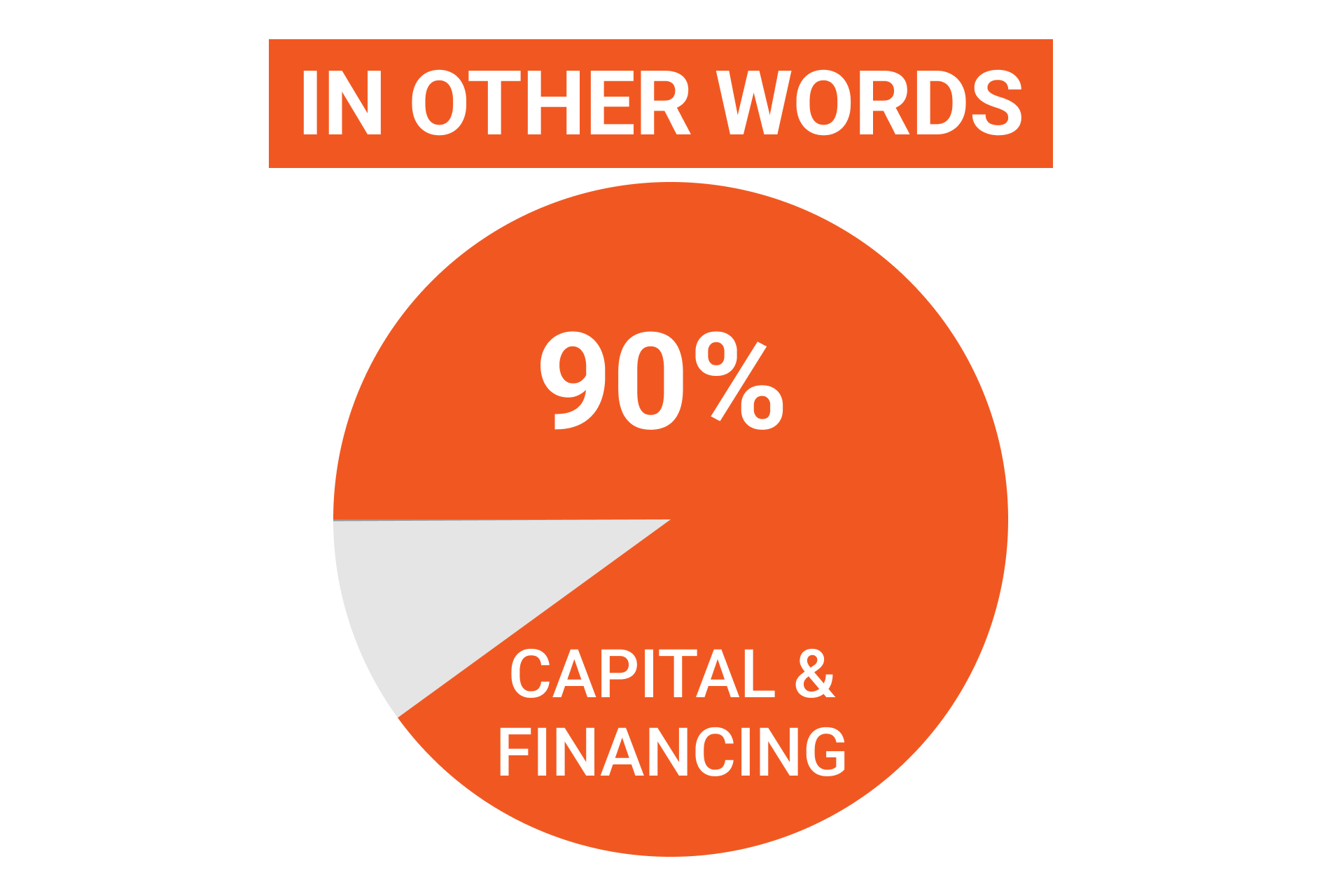

source: US Bureau of Labor Statistics
Consequently, Survival is Unlikely
Payment Delays Create Cash Flow Gaps That Cannot Be Filled
…Which is a Problem for Everyone – Particularly the Developer
Financial Distress in Project Ecosystems Introduces Project Delays
62%
Project Delays
are Introduced by Poorly Capitalized Subcontractors (Prequalified)

Financial Prequalification Standards are Unrealistic and Complicated for Under-Resourced Small and Minority Businesses
Financial Prequalification is a Barrier to Entry

“Financial Inclusion” is the name of this Challenge
The Consensus is that Financial inclusion is a Key Enabler to Boosting Prosperity
Financial Inclusion will Attract and Grow a New Workforce Needed to Fill the Ongoing Shortage
650,000
2022 Workforce Shortage
source: Association of Builders and Contractors

Waterfall Payments Create the Very Problems Developers and GC’s are Trying to Avoid


Funders Make Fractionalized Payments direct to the final destination
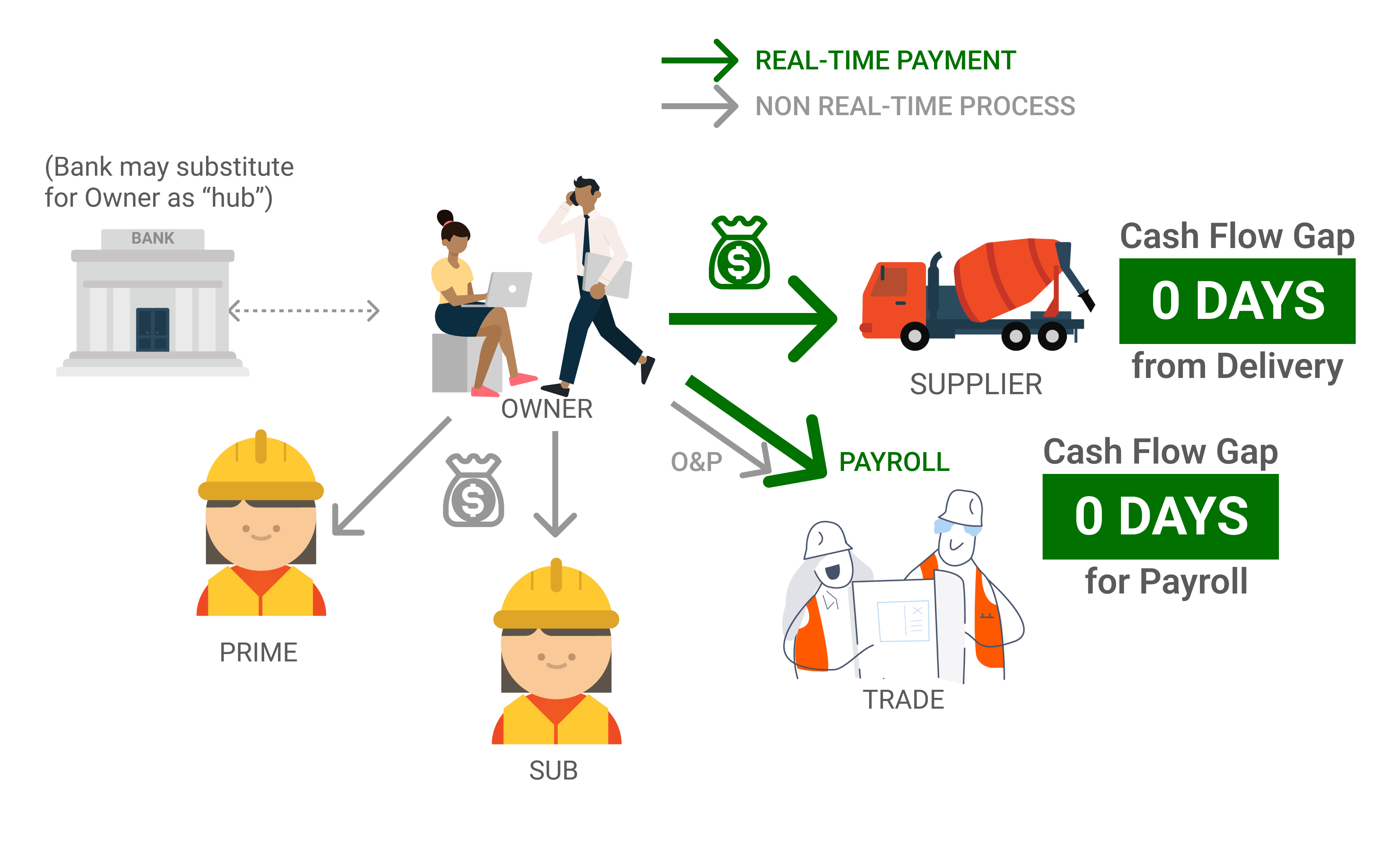

“Direct-to-Final” Payments Maintains Existing Approval Processes with Programmatic Release
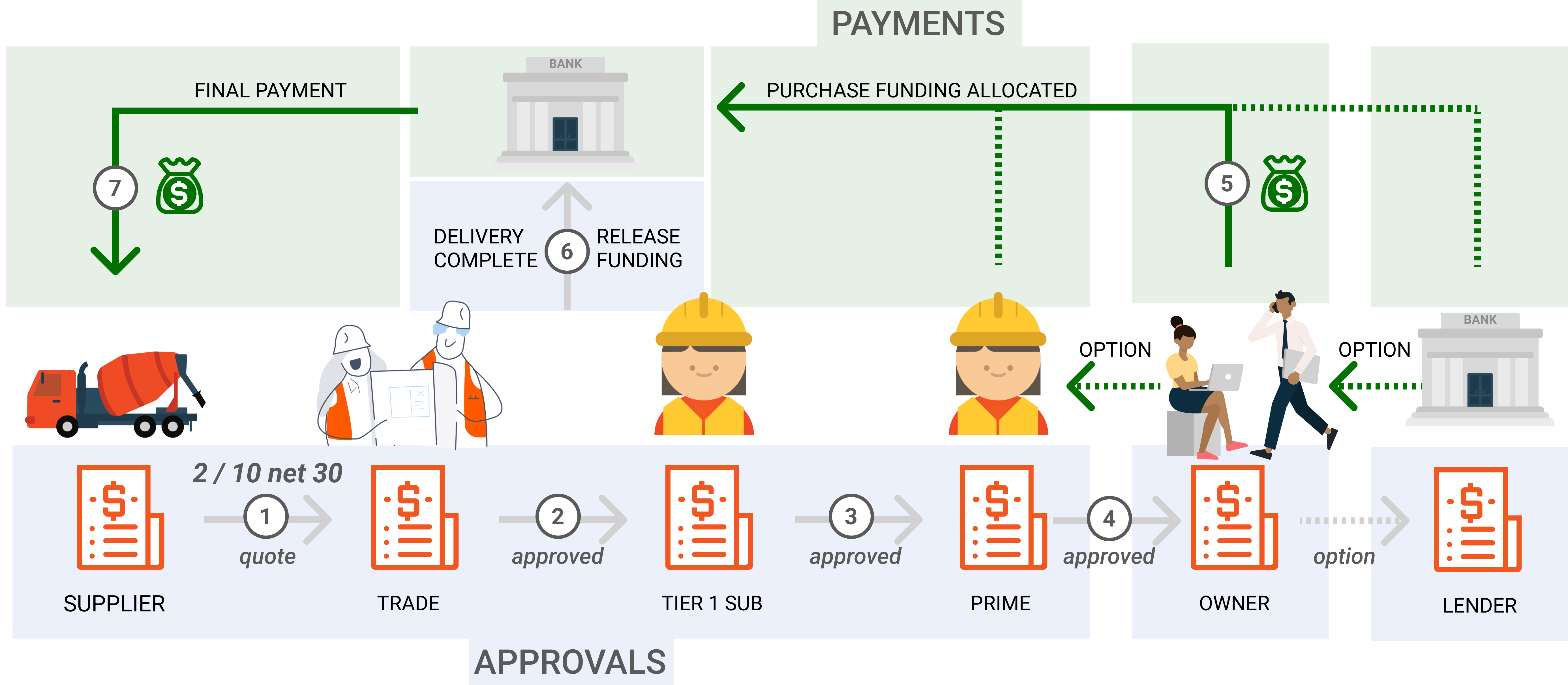
Circumvents Financial Challenges Faced by Small and Minority Business with “In-Kind” Capital

Circumvents Financial Challenges Faced by Small and Minority Business with “In-Kind” Capital
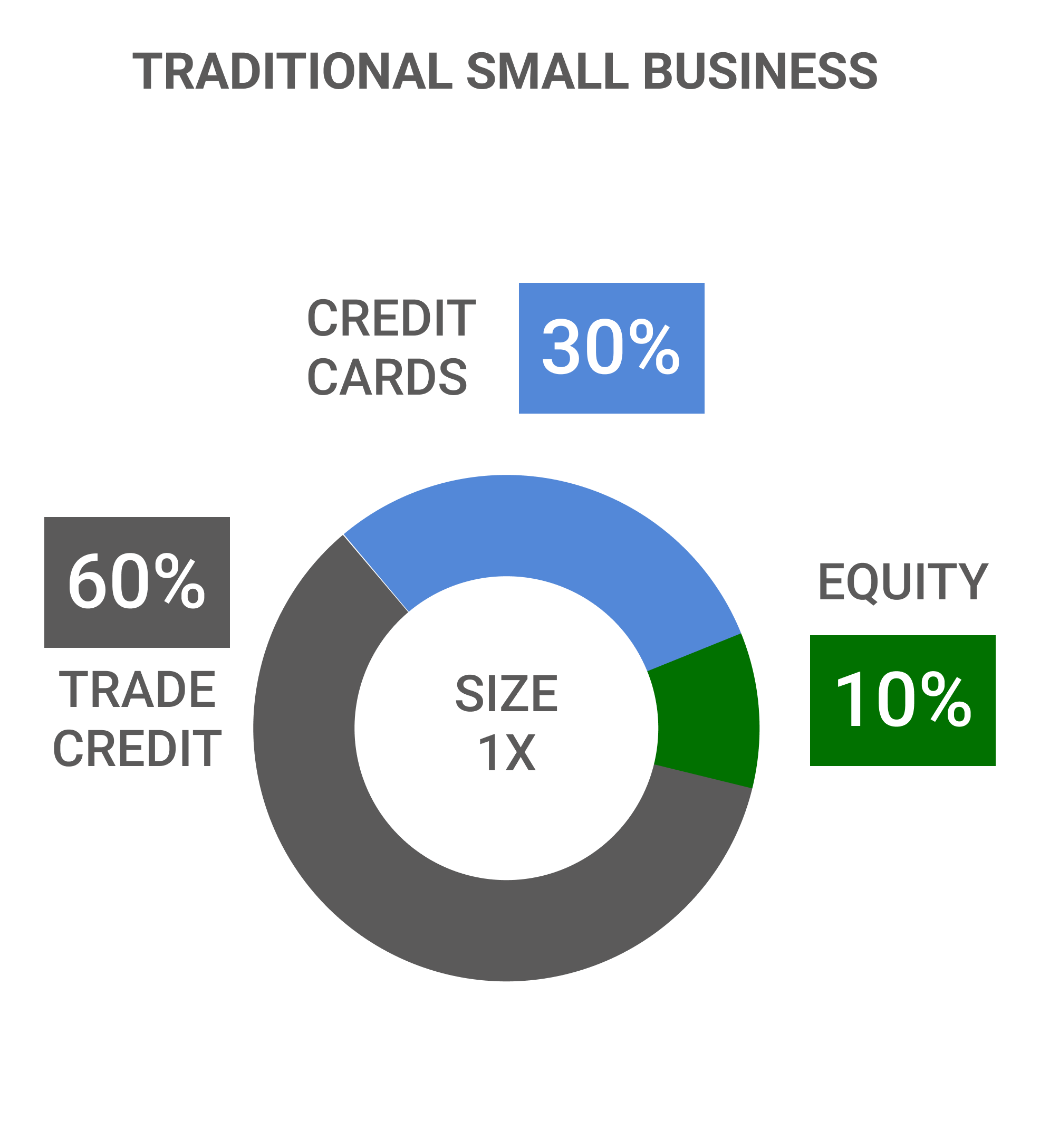


Hub & Spoke’s Fractionalized Payments Maintains Enough Invoice Value-at-Risk to Align Financial Incentives





Use Hub & Spoke Payments as a Way to Compete for the Best Subcontractors and Materials Suppliers



















